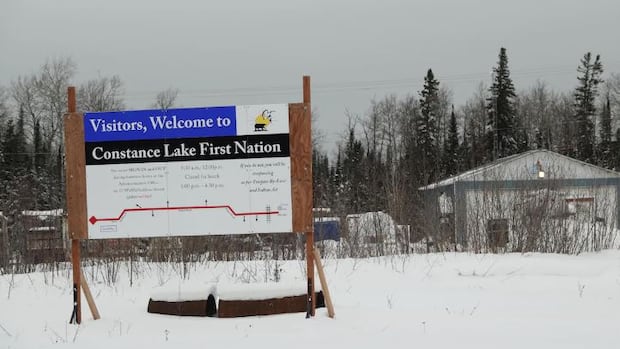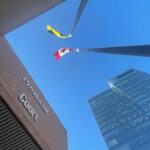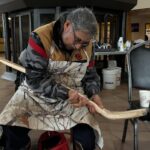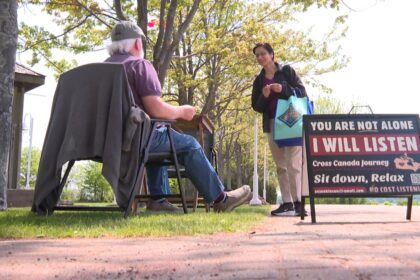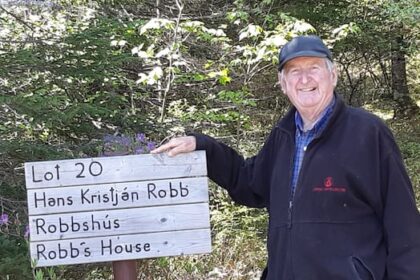During closing statements of an inquest into the deaths of five people in Constance Lake First Nation during an outbreak of a fungal lung disease, the lawyer for the first person who died argued the jury should find his manner of death to be undetermined.The lawyer for Luke Moore’s family, Emily Hill, said they don’t dispute the coroner’s conclusion that Moore died of acute blastomycosis pneumonia.But Hill said she doesn’t agree that it should be classified as natural.Jurors are asked to categorize deaths as natural, homicide, suicide, accidental or undetermined.Hill said there is more to consider, including that Moore, and the four others who died— Lorraine Shaganash, Lizzie Sutherland, Mark Ferris and Douglas Taylor— all lived in a remote northern Ontario First Nation without direct access to well-equipped medical facilities.She also pointed out that the outbreak started with many from Constance Lake, including Moore, making repeat visits to the Notre Dame Hospital in Hearst with pneumonia-like symptoms in early November 2021, but that doctors didn’t consider blastomycosis as the cause until it was too late.The first person from Constance Lake First Nation to die of blastomycosis, Luke Moore (left), is seen here with his father Arthur. (Submitted by Moore family)Hill also spoke of the failure to transfer Moore to a better-equipped hospital when his life depended on it, pointing to testimony about the provincial Ornge air ambulance’s inability to meet its own policy of transporting priority patients within a four hour window.She said the outbreak and the deaths were preventable and not unpredictable.“This was not a perfect storm,” said Hill.“Systemic racism is well documented, underfunded hospitals are well documented, and fear of Notre Dame was well known at the time … these deaths, although caused by disease, do not fit the determination of a natural death.”Lorraine Shaganash was a member of Constance Lake First Nation who died during an outbreak of a fungal lung disease in 2021. (submitted/Coroner’s Office of Ontario)She asked the jury to implement all of the 87 recommendations proposed jointly by all the parties at the inquest.The Moore family, in particular, she said, is asking for support in improving health care services in Constance Lake, in the hopes of preventing similar deaths.They want to ensure funding for two full-time Indigenous health navigators at the community’s health centre, and for a nurse or doctor in the community, she said.Hill, however, pointed out that Indigenous Services Canada is not supporting any recommendations that require extra funding.“This is unfortunate,” said Hill.“It’s extremely disappointing to the family of Luke Moore.”Hill noted that that some witnesses spoke about their fear that the inquest’s recommendations may “end up being words on a page,” but hopes that’s addressed with the founding of a “blastomycosis inquest implementation committee” in Constance Lake. Raphael Sutherland holds a picture of his mother, Lizzie, who died during a blastomcosis outbreak in Constance Lake First Nation (Kate Rutherford/CBC)Bianca Braganza, the lawyer for Constance Lake First Nation, said that “environmental racism” contributed to the five deaths in the community, agreeing that “natural” isn’t a good way to describe what happened.She pointed to the blue green algae in Constance Lake, an abandoned mill site where unremediated sewage flowed into Wilmot Lake as well as sewage back-ups creating the ideal recipe in the community of 800 people to breed the spores that cause blastomycosis.She said the current and former chiefs have been fighting for decades to clear their land of waste but lack the power and money to do so.Mark Ferris was a Constance Lake First Nation member known for his love of the land and sense of humour. He died of blastomycosis in November 2021. (Submitted/Coroner’s office of Ontario)“It is closure and the promise of change, but it still costs money,” she said of the inquest’s recommendations.“The nation does not see the children playing any more and they have been robbed by fear of the disease. Constance Lake is living on a cesspool of toxicity,” The lawyer for Indigenous Services Canada said the deaths should be considered “natural” rather than “undetermined.”Mariam Shanouda said there are six recommendations the federal government opposes, including a call to inspect all homes in Constance Lake for mold and clean it up within three months. She said Indigenous Services Canada needs more time to discuss the recommendations, and has provided alternate wording for some.Doug Taylor’s sister Kathleen says she still thinks of the brother she lost to blastomycosis every day. (Submitted/Coroner’s Office of Ontario)Regarding the manner of death, the lawyer for the doctors who treated the patients at the centre of the inquest also said the deaths should be categorized as natural, not undetermined.Francois Guay-Racine focussed on testimony from the one expert witness who spoke about systemic racism in Canadian health care and how social determinants have led to generations of poor health among Indigenous people.But he pointed out how that expert testified that testing for rare diseases only occurs when patients don’t respond to initital treatment and how the doctors in Hearst identified blastomycosis faster than others might have. The doctors, Guay-Racine said, in particular support the recommendations to increase health resources in northern Ontario.Province’s air ambulance, Ornge, promises better communicationLawyers for Ornge said its committed to implementing all recommendations that involve the provincial air ambulance service.Co-counsel Ted Marocco told the jury Ornge needs to communicate better with hospitals so it can keep families, and nurses and doctors, up to date on what is happening.No recommendation can prevent weather or multiple people getting sick at the same time, he said, but people at Notre Dame Hospital in Hearst didn’t know what was preventing Ornge planes from landing, and that should change.The lawyer for the coroner, Kristin Smith, said that after 21 days and 33 witnesses, this has been a long, raw inquest.She said that while there’s no doubt that the teams with the health unit and Indigenous Services Canada worked tirelessly on the outbreak, in order to find improvement, jurors have to look at the colonial structures and constructs that prevented information from being collected and shared. Today, I’m going to chart a road to reconciliation- Kristin Smith, counsel for coroner, Dr. Michael WilsonSmith said she has come to two paths.”One path, where we continue with a colonial mindset and the barriers it creates for Indigenous people, and another path,” she said.”Today I’m going to chart a road to reconciliation.”She said that while jurors will have no trouble agreeing on the facts, they may grapple with the lawyers disagreement over a “natural” versus an “undetermined” death.Smith said that reaching a conclusion that the cause of death was “natural” does not mean that jurors have to disregard the submissions of the families and the community that systemic racism contributed to the deaths.She asked the jurors to focus on the need for better public health education so that blastomycosis can be detected and treated earlier.In conclusion, the presiding coroner, Dr. Michael Wilson, told the jury it’s important to keep in mind that the deaths have deeply affected everyone in Constance Lake, as well as health care providers and others.He told the jurors that the inquest is about understanding what happened, not finding someone guilty or liable. Wilson said that in his opinion, the manner of death was straightforward and should be classified as “natural” due to blastomycosis.Five jurors are now tasked with reviewing the evidence and the proposed 87 recommendations.No word on when they will finish their deliberations.
Tuesday, 18 Nov 2025
Canada – The Illusion
Search
Have an existing account?
Sign In
© 2022 Foxiz News Network. Ruby Design Company. All Rights Reserved.
You May also Like
- More News:
- history
- Standing Bear Network
- John Gonzalez
- ᐊᔭᐦᑊ ayahp — It happened
- Creation
- Beneath the Water
- Olympic gold medal
- Jim Thorpe
- type O blood
- the bringer of life
- Raven
- Wás’agi
- NoiseCat
- 'Sugarcane'
- The rivers still sing
- ᑲᓂᐸᐏᐟ ᒪᐢᑿ
- ᐅᑳᐤ okâw — We remember
- ᐊᓂᓈᐯᐃᐧᐣ aninâpêwin — Truth
- This is what it means to be human.
- Nokoma


